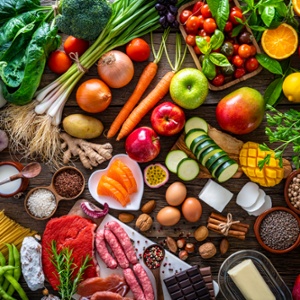The amount of times we eat food prepared outside of the home has increased over the years. Now many options are available to us to eat out in cafes and restaurants and order food from a takeaway.
Eating out and socialising around food and drink is central to many of our lives. It may also be vital to your culture, traditions, and celebrations.
With a positive action plan and the support you need, you can enjoy eating out and the occasional takeaway while achieving your goals.
Eating out
You can still eat out if this is an important and enjoyable part of your life. If you can get the balance right for what you eat out and when you should be able to keep on track with your goals.
Life is busy, and the odd meal in a restaurant, café, or takeaway will not impact your overall diet significantly.
If it is a regular part of your week or month, a few minor changes could help you:
- achieve your goals
- save money
- stay motivated
- try healthy and tasty food
- enjoy these occasions.
Plan ahead
Try to visit restaurants where there are healthier choices. See if you can check the menu and plan what you will eat before you go. Many food menus display nutrition information which can help you choose healthier options. Get support from friends, family, or those you are eating out with in a way that works for you.
Try to eat the right amount of food for you
Meal deals and set menus can encourage us to think we are getting more for our money, which is not always true. Think about the number of courses you have. A starter and a smaller main or just a main meal may be enough.
- Portions can be large when you eat out. Go for smaller plates when possible. You could order an extra side of veg to go with it.
- Be aware of add-ons. Sometimes extra bread, cheese or other food items are added to dishes which you don’t necessarily need.
- Ask to take home what you can’t finish. This can help you eat the right amount for you instead of eating everything on your plate, even when you are full.
Think about what meal you choose
- Go for dishes with leaner meat or cut the fat off before eating.
- Try dishes with more veg.
- Choose tomato-based sauces instead of cheese or cream.
- If you have side options as part of a meal, go for the veg or salad instead of chips.
The odd dessert now and then is fine, and you don’t need to cut desserts out. However, you might want to think about your dessert choices if they are something you order more regularly. Opting for tea or coffee at the end of the meal instead, or having tea or coffee with a mini dessert if available, would be healthier choices.
What you choose to drink is also important when eating out. Without realising it, we can get a lot of extra sugar and fat from our drinks. Take a look at our drinks page for healthier drinks and alcohol advice.
Think about the balance of food you have over the whole day
You could choose a smaller lunch option if you plan a larger dinner. Keep to a regular meal pattern and try not to skip meals during other parts of the day. This can help you control hunger and how much you order when you eat out.
Takeaways
Since the COVID-19 pandemic, takeaways have become even more accessible. The odd takeaway now and then will not make a big impact overall.
Take notice of why you are ordering a takeaway and how this matches your values and goals. We may get into a routine or reward ourselves, for example, with Friday night takeaways or after a busy week. Adverts and promotions may also prompt us. Understanding your reasons can help you be better prepared and think about alternatives.
If you have takeaways quite regularly, then you could consider the following suggestions:
- Some takeaways have more healthier options than others, so try to order from places with healthier options.
- It’s easy to over-order. Consider whether you need extra sides, or starters or if a main would be enough.
- Ask for smaller portion sizes when possible.
Think about the type of meal you choose; healthier choices include:
- Stir-fried, steamed or grilled dishes with vegetables, lean meat or fish.
- Tomato-based sauces instead of cheese, cream and coconut.
- Dry dishes with spices and salads instead of sauces.
- Breadcrumbed instead of battered options.
- Plain boiled rice, bread, naan, roti and flatbread, choosing wholegrain when possible.
- Plain crusts instead of ones stuffed with meat or cheese.
- Thicker-cut chips instead of thin ones as they absorb less fat.
- Make a note that you don’t want add-ons. Sometimes extra bread, poppadums, dips, prawn crackers or other food items are included that you don’t necessarily need. Ask to go without extra cheese or sauces when you can.
If you eat out or order a lot of takeaways, such as weekly, you might want to consider cooking versions at home instead. This is often a healthier and cheaper option and could be tastier too. If you would like more support for cooking your own meals at home, our page making everyday meals healthier might be helpful.






